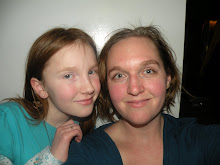 Here is a really neat article. I love to read about these things that I have noticed, but don't have the historical data to document.
Here is a really neat article. I love to read about these things that I have noticed, but don't have the historical data to document.Women and cows go back many pages in history, from the ancient Egyptian Goddess, Hathor, depicted as a cow whose body was the heavens and whose udder spewed the milky way. Women isnstinctively are drawn to cows. Not just any cows, dairy cows. Beef and raising meat are very masculine expressions of our hunter gatherer ancestors, but milking is a decidedly feminine act. I believe it was the famous dairymen , Hoard, who coined the " Foster Mother of the Human Race " phrase. I have a laminated sign that our friend, Walter, made for me when I first got a milk cow that says,
" Notice to The Help---The rule to be observed in this stable at all times, toward the cattle, young and old, is that of patience and kindness. A man's usefulness in a herd ceases at once when he loses his temper and bestows rough usage. Men must be patient. Cattle are not reasoning beings. Remember that this is the Home of Mothers. Treat each cow as a Mother should be treated. The giving of milk is a function of Motherhood; rough treatment lessens the flow. That injures me as well as the cow. Always keep these ideas in mind in dealing with my cattle.
-W.A. Hoard
Founder of Hoard's Dairyman
A very sweet man's perspective, showing respect and much appreciation of his dairy cows, almost like that protective love a man has for his Mother.
As societies moved from hunter/gatherer to a pastoral /herding way of life female cows were valued for their vast contributions of not only milk but a yearly calf for meat as well. Here's a quote I like from the article above, " As clans began to base their politics and survival on the nurturing of cattle, women gained respect, ate better, and had clout." I love that word, clout, it reminds me of plucky.
The wives of early American settlers often relied on a cow or two for financial stability. They supplemented their husbands incomes with their egg and butter money. Women learned the art of making good butter from their mothers. The women and children were in charge of the livestock and family's cows while the men were off on voyages or at war. The children were sent to take the cows out to graze and retrieve them for milking, while the women made cheese, butter, and clabber.
Cows are such doting mothers, lavishing attention on their calves and taking care that they don't stray too far. That's why I just can't deprive them of their calves, even though sometimes its a bit more work to actually have a REAL dairy and allow them this pleasure. I personally think that certified organic standards should include allowing the cows this biological and instinctual act, that is so key to the production of milk. Maybe that's just my femine side sympathising with our cows.
Long story short, I love every part of it. From the milking, to the cheesemaking, to enjoying the bounty, to gazing at the cows grazing in the fields. Cows exude peace and contentment.









I want to replicate that sign for our barn, not just for the cows but for all of the animals. My only problem is that I'm a man, and I'm the one doing (and enjoying) all of the hand milking. But I'm milking goats. Now don't tell me that cows are for women, and goats are for Old Goats.
ReplyDelete